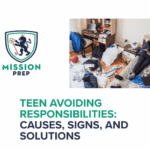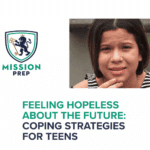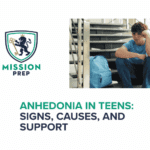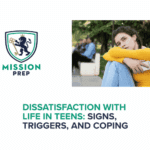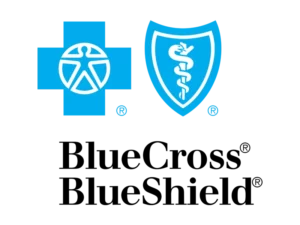Hypomania in Teens: Causes, Signs, and Treatment Options

As children enter their teenage years, they may start to show signs of moodiness. Of course, this is a natural part of adolescence, but in some cases, sudden mood changes in teens can be cause for concern. When a child starts to have large fluctuations in mood that negatively impact their daily lives, this could be indicative of a mental health condition.
Bipolar disorder is a severe and chronic mood disorder that can affect people of all ages. The hallmark signs of bipolar disorder are episodes of mania, hypomania, and depression.1-3 Being able to identify these episodes is important for receiving adequate mental health treatment.
If you’re concerned about sudden mood shifts or hypomania in teens, a mental health professional can advise you on the suitable actions to take based on their symptoms and needs.
This page can also help you better understand hypomania in teens, as it explores:
- What hypomania is
- Causes of bipolar disorder
- Symptoms of bipolar disorder in teens
- Treatment options for adolescent mood disorders
- Where to find professional support
- Responses to frequently asked questions about hypomania in teens

What Is Hypomania?
Causes of Bipolar Disorder
A variety of factors can contribute to the development of bipolar disorder in teens. For instance, studies show that bipolar disorder is highly heritable, with 60-80% of the traits being passed on through genetic factors.2-5
However, there isn’t a known genetic marker for bipolar disorder. Therefore, even though there is a general understanding that this mental health disorder is passed down in families, researchers can’t point to a single biological cause.3
Some studies show bipolar disorder is related to an inflammatory response in the body brought on by different environmental factors.2-,5 A few of the factors associated with this are smoking, poor diet, lack of physical activity, and childhood trauma.
The role of childhood trauma or maltreatment has also been studied extensively. People diagnosed with bipolar disorder who also experienced trauma tend to have an earlier onset of the disease. They may also have more severe depressive symptoms, increased rates of suicide, and higher rates of comorbidities (such as anxiety and obesity).3
In addition, studies found that emotional abuse and emotional neglect are the forms of childhood maltreatment most strongly associated with developing bipolar disorder.5 Stressful life events are also linked to the onset of bipolar disorder, but there aren’t specific stressors that have been identified as of yet.5
Symptoms of Bipolar Disorder in Teens
As mentioned, bipolar disorder includes episodes of mania and/or hypomania, which alternate or mix with episodes of depression.1 There are two types of bipolar disorder: Bipolar I specifically includes episodes of mania, whereas Bipolar II presents with hypomanic episodes.3
Since there is no known genetic marker for bipolar disorder, a diagnosis is based on clinical symptoms. Being able to identify warning signs of bipolar disorder teens is the key to an accurate diagnosis and beginning the appropriate course of treatment.3
The behaviors associated with hypomania include:
- An extreme increase in energy
- Lack of sleep without feeling tired
- Talking more than usual to unfamiliar people
- Exhibiting extra self-confidence
- Having a sudden burst of insight2
These behaviors can also be associated with risky decision-making in teens because of the extra confidence they have in themselves. Additionally, a period of hypomania has to last for a week or more to meet the diagnostic criteria for bipolar II.2
On the other end of the spectrum are the depressive symptoms, which also need to last a week or more for diagnosis.2 Some of these common symptoms include feeling sad or irritable, sleeping more than usual, and, in some cases, self-injurious behaviors.2
If your child is regularly alternating between depressive episodes and hypomanic episodes, seeking out a professional teen mental health assessment for an accurate diagnosis is advised.
Treatment Options for Adolescent Mood Disorders
Finding the right teen behavioral treatment requires taking the time to understand all of the options and considering which intervention style works best for your child.
For an acute manic episode, the recommended treatment is medication. Specifically, antipsychotic medications and mood stabilizers are shown to be effective in treating mania symptoms in those with bipolar disorder.1,3,6.
The following information considers some of the medications that are commonly used for treating an acute episode. It also takes a look at those that can be incorporated into a treatment plan once the focus is on maintenance.
Treating Acute Mania in Adolescents
Acute mania is considered a medical emergency, and it requires immediate treatment
to decrease the risk of harm to the person at hand and those around them.3 Antipsychotics are typically the first line of treatment for mania in adolescents with bipolar disorder3.
The use of antipsychotics in adolescents with bipolar disorder has significantly increased in the past twenty years.6 However, when using these medications, patients need to be monitored closely due to the high rates of side effects, including metabolic abnormalities, increased prolactin levels, and tardive dyskinesia (TD). TD is a major concern because it is a movement disorder that involves repetitive involuntary movements, commonly in the face, limbs, and torso.6
Despite the risk of side effects, there are several antipsychotics that have been studied in adolescents with bipolar disorder with positive results. The following medications are often used to treat bipolar disorder in teens today: aripiprazole, asenapine, olanzapine, quetiapine, risperidone, and ziprasidone.6
Maintenance Treatment of Bipolar Disorder in Teens
There are different medications used after treating an acute manic event in order to maintain safety and mental wellness. Mood stabilizers are a class of medications that are appropriate for this treatment. The most commonly used mood stabilizer in the treatment of bipolar disorder in teens is lithium.3,6,7
In addition to pharmacological treatment, there is some evidence to support the effectiveness of cognitive behavioral therapy (CBT),2,7 dialectical behavior therapy (DBT),7 and multifamily psychoeducational psychotherapy7 in the treatment of bipolar disorder in teens.
CBT for bipolar II in adolescents focuses on changing negative thinking patterns associated with depressive episodes and challenging cognitive distortions.2 Typical interventions used during CBT include progressive muscle relaxation techniques, cognitive restructuring, and self-management.2 CBT can also involve the entire family. In such circumstances, the therapist might emphasize communication skills, problem-solving skills, and regulating emotions.7
DBT for adolescents with bipolar disorder incorporates psychoeducation, emotional regulation, mindfulness, distress tolerance, and interpersonal effectiveness skills. DBT can also promote family involvement in therapeutic interventions to improve effectiveness.7 Further, because DBT emphasizes the use of practical skills,7 it may be particularly effective for developing adaptive coping strategies for impulsive teens.
Multifamily psychoeducational psychotherapy is a form of group therapy. The main goals are educating the teen and their family, receiving the support of the group and the therapist, as well as developing better social skills.7

MissionPrep: Providing Support for Manic Behavior in Teens
At Mission Prep, we want to make it easier for you to find the support your teen needs to manage bipolar disorder.
We have different levels of treatment available depending on the severity of your child’s symptoms. Our teen outpatient therapy programs include CBT and DBT, as well as other therapeutic interventions when needed. Alternatively, if symptoms are severe or if there’s a risk of harm, our residential programs can provide 24/7 compassionate support and care.
If you want to learn more about Mission Prep and how we can help your child, contact us today. Our trained mental health providers can answer any of your questions to help you better navigate all of the treatment options available.
Frequently Asked Questions About Hypomania in Teens
The aim of this page was to help you better understand hypomania in teens, but it’s normal to have continuing concerns or questions. For this reason, we’ve provided some responses to FAQs about hypomania teens.
1. How Can I Address Teen Risky Behavior and Mental Health Problems in My Child?
One way to help decrease teen risky behaviors is by embracing mindful parenting. Mindful parenting is the ability to approach parent-child interactions non-judgmentally and be aware of any present needs.8 Recent studies show that mindful parenting is associated with a significant decrease in risky behaviors, including substance use or sexual behaviors.8
2. What Are Some Teenage Thrill-Seeking Concerns to Look for When Bipolar Disorder Is Suspected?
Thrill-seeking behaviors can include misusing prescription drugs, using marijuana, engaging in risky sexual behaviors, impaired driving, or riding in a car with someone who is under the influence of drugs or alcohol.9 If you notice your teen engaging in any of these behaviors, it could be a sign of a manic or hypomanic episode.
3. Where Can I Find Teen Residential Treatment Near Me?
Mission Prep has residential treatment centers in California and Virginia to accommodate people across the United States. Our facilities include tailored housing, collaborations with hospitals, and comfortable living spaces.
4. How Does Therapy Address Risky Decision Making in Teens With Bipolar Disorder?
There are different therapeutic options designed to address certain problem behaviors in teens. When dealing with risky decision making, DBT is often used to develop methods of distraction and calming strategies, while reducing vulnerability factors leading to risky behaviors.10
References
- Grande, I., Berk, M., Birmaher, B., & Vieta, E. (2016). Bipolar disorder. The Lancet, 387(10027), 1561–1572. https://doi.org/ 10.1016/S0140-6736(15)00241-X
- Darusman, M. R., & Hidayati, D. S. (2024). Cognitive-Behavioral therapy to change cognitive distortions among adolescents with Bipolar II Disorder. Procedia: Studi Kasus dan Intervensi Psikologi, 12(2), 86-92. DOI:10.22219/procedia.v12i2.29892
- McIntyre, R. S., Berk, M., Brietzke, E., Goldstein, B. I., Lopez-Jaramillo, C., Kessing, L. V., Malhi, G. S., Nierenberg, A. A., Rosenblat, J. D., Majeed, A., Vieta, E., Vinberg, M., Young, A. H., & Mansur, R. B. (2020). Bipolar disorders. The Lancet, 396(10265), 1841–1856. https://doi.org/10.1016/S0140- 6736(20)31544-0
- Vieta, E., Salagre, E., Grande, I., Carvalho, A. F., Fernandes, B. S., Berk, M., Birmaher, B., Tohen, M., & Suppes, T. (2018). Early intervention in bipolar disorder. American Journal of Psychiatry, 175(5)
- Rowland, T. A., & Marwaha, S. (2018). Epidemiology and risk factors for bipolar disorder. Therapeutic Advances in Psychopharmacology, 8(9), 251–269. https://doi.org/10.1177/ 2045125318769235
- Elsayed, O. H., Pahwa, M., & El-Mallakh, R. S. (2022). Pharmacologic treatment and management of bipolar disorder in adolescents. Expert Opinion on Pharmacotherapy, 23(10), 1165-1179. https://doi.org/10.1080/14656566.2022.2083954
- Cichoń, L., Janas-Kozik, M., Siwiec, A., & Rybakowski, J. K. (2020). Clinical picture and treatment of bipolar affective disorder in children and adolescents. Psychiatria Polska, 54(1), 35-50. https://doi.org/10.12740/PP/OnlineFirst/92740
- Turpyn, C. C., & Chaplin, T. M. (2016). Mindful parenting and parents’ emotion expression: effects on adolescent risk behaviors. Mindfulness, 7(1), 246-254. doi:10.1007/s12671-015-0440-5.
- Ravert, R. D., Schwartz, S. J., Zamboanga, B. L., Kim, S. Y., Weisskirch, R. S., & Bersamin, M. (2009). Sensation seeking and danger invulnerability: Paths to college student risk-taking. Personality and individual differences, 47(7), 763–768. https://doi.org/10.1016/j.paid.2009.06.017
- Khodabakhsh, M., Jafari, A., Banihasan, M., & Lachin, M. (2024). Effectiveness of dialectical behavior therapy on hostile attributes and risky behaviors in adolescents. Journal of Fundamentals of Mental Health, 26(3). DOI: 10.22038/JFMH.2024.68953.3032

